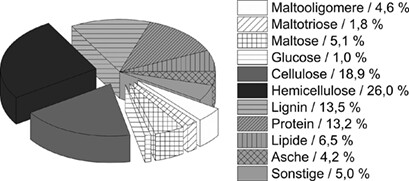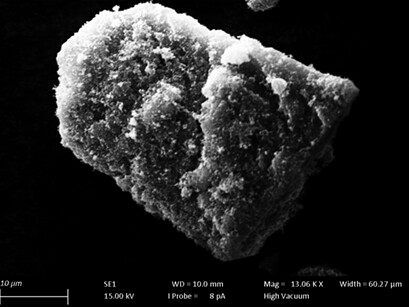Journal list menu
Export Citations
Download PDFs
Table of Contents
Fungal-Based Biorefinery: From Renewable Resources to Organic Acids
- First Published: 05 May 2023
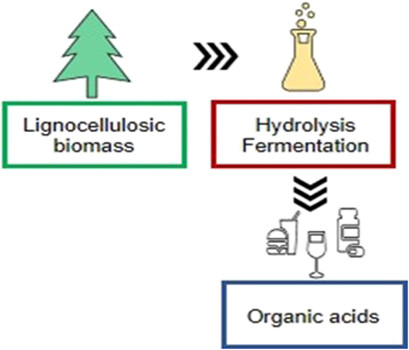
Biorefineries are green facilities in which lignocellulosic biomasses can be transformed into a wide range of bioproducts. For instance, organic acids are interesting molecules, as they find application in several industrial areas. The production of organic acids by filamentous fungi is the preferred route due to their ability to hydrolyze lignocellulosic biomasses and to produce organic acids.
Development of a Single-Use Device and an Associated Optical Measurement Method for Automated Magnetic Bioseparation
- First Published: 07 November 2022
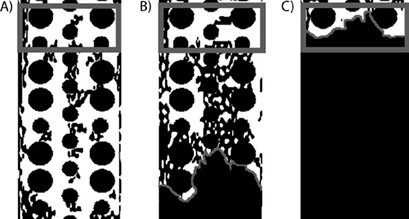
Classical measurement methods used in magnetic separation detect particles – and thus product losses – in the magnetic filtrate only after breakthrough has already occurred. The identification of a characteristic contour of particle accumulation zones within a suitable single-use magnetic separation device can be used to predict an approaching breakthrough.
Effects of Pretreatment on the Biocatalysis of Renewable Resources
- First Published: 14 September 2022
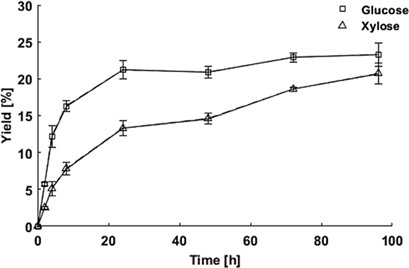
The biocatalysis process is a key step in the valorization of lignocellulosic biomass. As such, prior pretreatment of the material as well as the enzyme kinetics should be considered carefully for a successful biorefinery concept. The lignin content of the biomass is a major factor influencing the pretreatment process.
Bioraffinerien auf Basis schwach verholzter BiomasseBiorefineries Based on Weakly Lignified Biomass
- First Published: 23 June 2020
Die Entwicklung der Verfahrenstechnik an der TU Kaiserslautern
The Development of Process Engineering at the TU Kaiserslautern
- First Published: 28 May 2020
Aufbau eines Bioraffineriekonzeptes für Biertreber mit vorgelagertem Pressschritt Development of a Biorefinery Concept for Brewers' Spent Grain with a Preliminary Pressing Step
- First Published: 22 August 2019
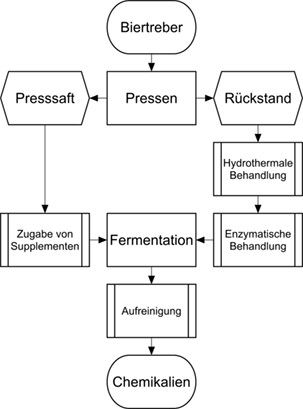
Durch das vorgeschlagene Bioraffineriekonzept entstehen Vorteile bei der konventionellen hydrothermalen Weiterverarbeitung, so dass z. B. weniger fermentationsinhibierende Substanzen entstehen. Außerdem wird eine zusätzliche zuckerhaltige Fraktion generiert, die exemplarisch zur fermentativen Milchsäureherstellung genutzt wird.
90 Jahre CIT – 90 Jahre Entwicklungen in Biotechnologie und Bioverfahrenstechnik
90 Years CIT – 90 Years Development in Biotechnology and Bioprocess Engineering
- First Published: 24 September 2018
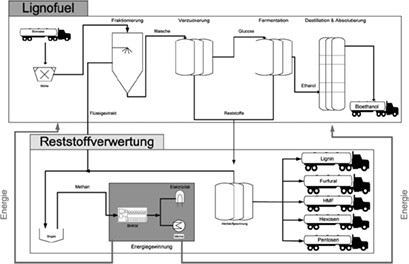
Anlässlich des neunzigjährigen Jubiläums der Zeitschrift Chemie Ingenieur Technik zeichnet der Beitrag die Entwicklung der Biotechnologie in der Zeit von 1949 bis heute anhand von Veröffentlichungen in diesem Journal nach. Aus jeder Dekade werden dazu zentrale Fortschritte und Tätigkeitsfelder der Disziplin exemplarisch vorgestellt.
Katalysatordeaktivierung beim photokatalytischen Abbau von Methylenblau an TiO2
Catalyst Deactivation During Photocatalytic Degradation of Methylene Blue with TiO2
- First Published: 30 March 2018
Biotechnology and Bioprocess Engineering – From the First Ullmann's Article to Recent Trends†
- First Published: 29 May 2015

For thousands of years, biotechnology has been a cornerstone of human civilization and is destined to be a key technology of the 21th century with a great economic potential from everyday objects through to fine chemicals. Among latest concepts of the biorefinery, biofilm as well as microreactor techniques, and the synthetic biology are presented.
Aufarbeitung von Polyphenolen aus Weizen mittels Zeolithen am Beispiel der Ferulasäure
Downstream Processing of Polyphenols from Wheat by Zeolites using the Example of Ferulic Acid
- First Published: 02 December 2014

Die Prozessentwicklung, um Weizen als mögliche nachwachsende Rohstoffquelle für die Gewinnung von Ferulasäure zu nutzen, stellt eine Herausforderung dar, da sie in direkter Konkurrenz zur Mehl- und Stärkeindustrie steht. In dem Artikel wird eine mögliche Prozessführung und -integration in bestehende Verfahren der Mehlherstellung vorgestellt.
Biotechnologie und Bioverfahrenstechnik – Vom ersten Ullmanns Artikel bis hin zu aktuellen Forschungsthemen
Biotechnology and Bioprocess Engineering – From the First Ullmanns Article to Recent Trends
- First Published: 05 November 2014

Die Biotechnologie ist seit Jahrtausenden ein Pfeiler der Zivilisation und heute in Synergie mit der Gen- sowie Verfahrenstechnik eine Schlüsseltechnologie des 21. Jahrhundert. Entlang aktueller Konzepte der Bioraffinerie, der Biofilm- sowie Mikroreaktortechnik und der synthetischen Biologie wird ihr hohes Innovationspotential vorgestellt.
Adsorptive Vorbehandlung von Rohglycerin für die 1,3-Propandiol Fermentation mit Clostridium diolis
Adsorptive Pretreatment of Crude Glycerol Prior to Fermentation to 1,3-Propanediole by Clostridium Diolis
- First Published: 11 December 2013

Ob sich Rohglycerin, z. B. aus der Biodieselproduktion, als Fermentationssubstrat eignet hängt stark von dessen Reinheit ab. In diesem Artikel wird der Einfluss der in Rohglycerin enthaltenen Fettsäuren auf dessen Fermentierbarkeit beleuchtet und eine Möglichkeit vorgestellt, die Fettsäuren mithilfe von Adsorbentien aus dem Glycerin zu entfernen.
Functionalized Magnetizable Particles for Downstream Processing in Single-Use Systems
- First Published: 30 October 2012

A significant reduction of unit operations in biotechnological downstream processing can be achieved by magnetic particles functionalized with affinity ligands. The principles of magnetizable particles, their synthesis and functionalization are explained and applications in the area of microfluidics and downstream processing are considered with a focus on single-use technology development potential.
Die große Herausforderung Verfahrenstechnik – Verknüpfung chemischer und biotechnologischer Prozesse bei der Nutzung nachwachsender Rohstoffe
- First Published: 22 July 2010
Use of Renewable Raw Materials in the Chemical Industry – Beyond Sugar and Starch
- First Published: 22 April 2008

Feedstock for industrial chemical processes is mainly based on petroleum oil. In the near future, alternative reservoirs must be tapped on extensively. Here, a few current trends focusing on C1 carbonic compounds such as methanol and methane, which can be used as fuel substitute but also as valuable compounds within a chemical refinery, are presented.





